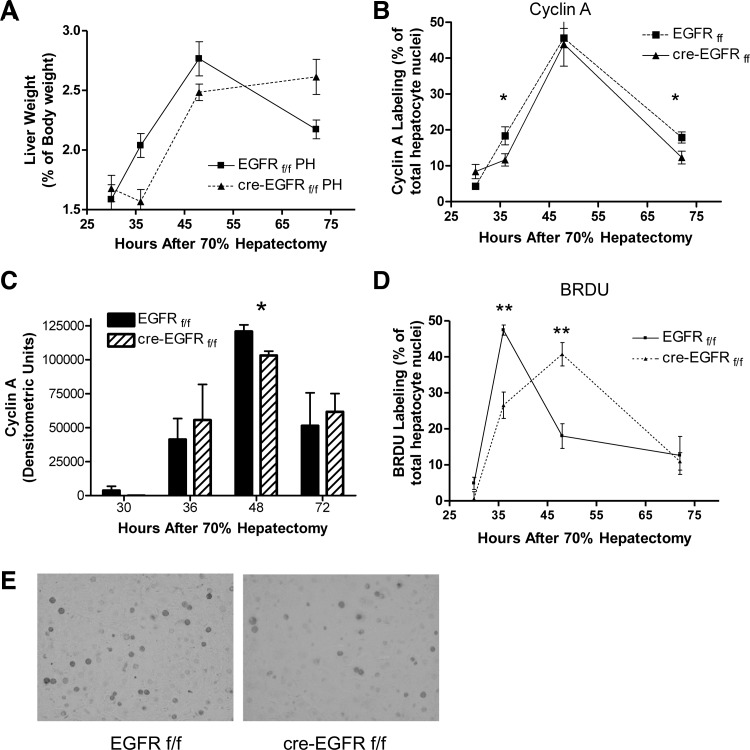Fig. 7.
HS-EGFRKO mice show delayed 5-bromo-2′-deoxyuridine (BrdU) labeling in mice subjected to 70% hepatectomy. A: livers were removed from animals that underwent 70% hepatectomy and expressed as a percent of total body weight. Statistically significant differences were found in weight at 36 and 72 h after partial hepatectomy (PH), with the livers from the male HS-EGFRKO mice being significantly smaller than those of the wild-type mice at 36 h. No such differences were seen for female mice. B: we monitored nuclear cyclin A, a specific S-phase marker, by immunohistochemistry and observed that peak labeling occurred at 48 h in both the HS-EGFRKO and wild-type mice. Labeling at this time was comparable in both groups. C: we monitored cyclin A expression by immunoblotting and observed that the appearance of cyclin A in the livers of HS-EGFRKO mice after PH paralleled that in the wild-type mice. The level at 48 h was slightly higher in the wild-type mice. D: we monitored BrdU nuclear labeling by immunohistochemistry. BrdU defines cells actively synthesizing DNA during the instant it is injected into the mice. Although the kinetic of BrdU labeling was similar between KO and wild-type mice, peak labeling in KO mice lagged behind that in wild-type mice, suggestive of delayed cell proliferation. E: photomicrograph shows nuclei that are positive for BrdU incorporation into DNA. *P < 0.03; **P < 0.006.

